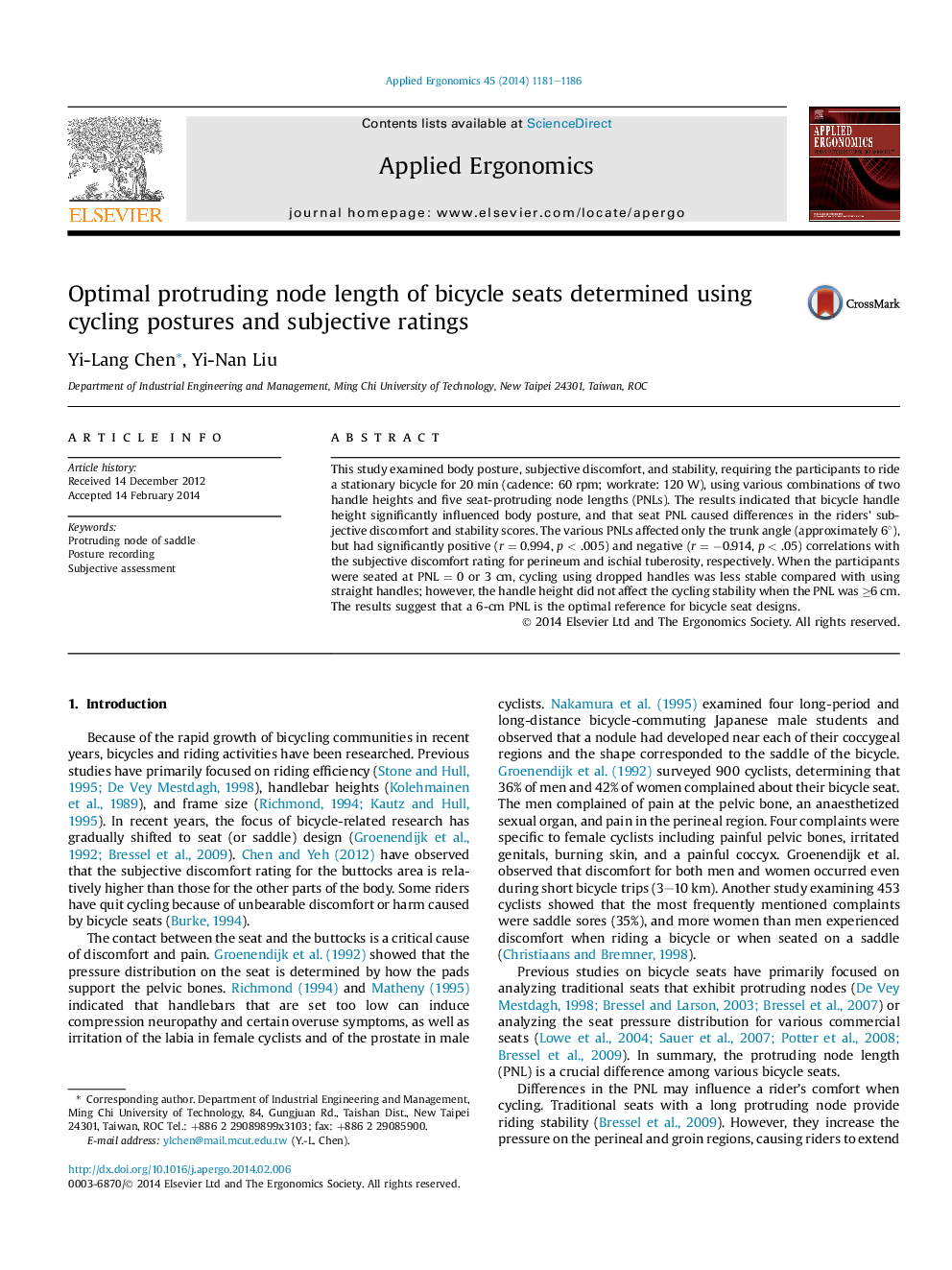| Article ID | Journal | Published Year | Pages | File Type |
|---|---|---|---|---|
| 10365908 | Applied Ergonomics | 2014 | 6 Pages |
Abstract
This study examined body posture, subjective discomfort, and stability, requiring the participants to ride a stationary bicycle for 20 min (cadence: 60 rpm; workrate: 120 W), using various combinations of two handle heights and five seat-protruding node lengths (PNLs). The results indicated that bicycle handle height significantly influenced body posture, and that seat PNL caused differences in the riders' subjective discomfort and stability scores. The various PNLs affected only the trunk angle (approximately 6°), but had significantly positive (r = 0.994, p < .005) and negative (r = â0.914, p < .05) correlations with the subjective discomfort rating for perineum and ischial tuberosity, respectively. When the participants were seated at PNL = 0 or 3 cm, cycling using dropped handles was less stable compared with using straight handles; however, the handle height did not affect the cycling stability when the PNL was â¥6 cm. The results suggest that a 6-cm PNL is the optimal reference for bicycle seat designs.
Keywords
Related Topics
Physical Sciences and Engineering
Computer Science
Human-Computer Interaction
Authors
Yi-Lang Chen, Yi-Nan Liu,
